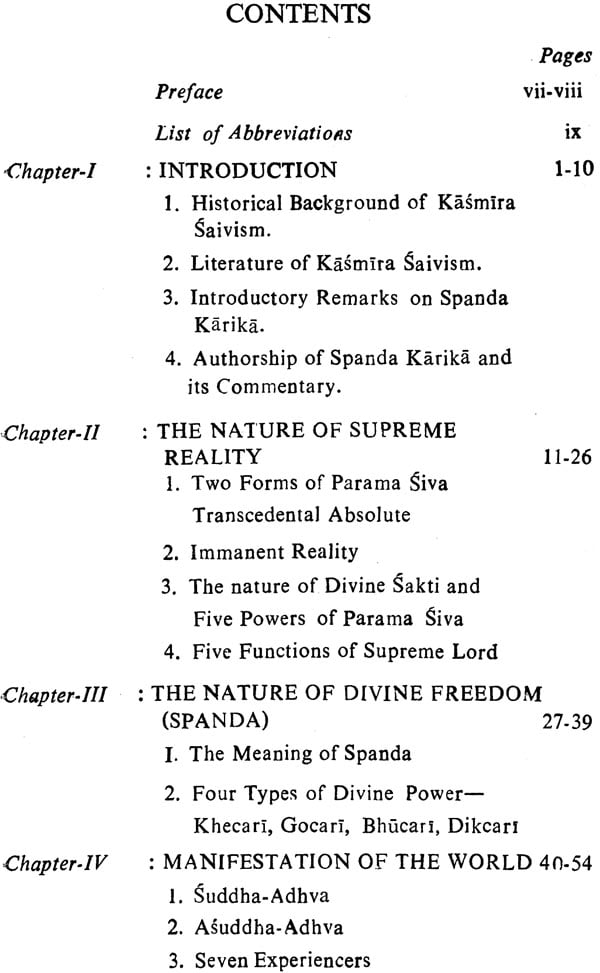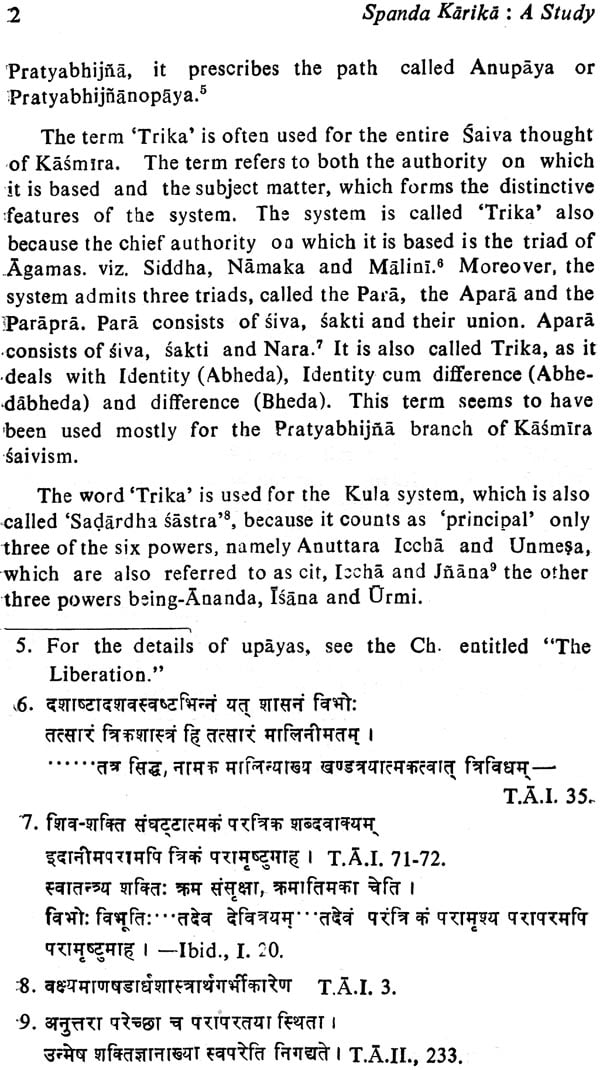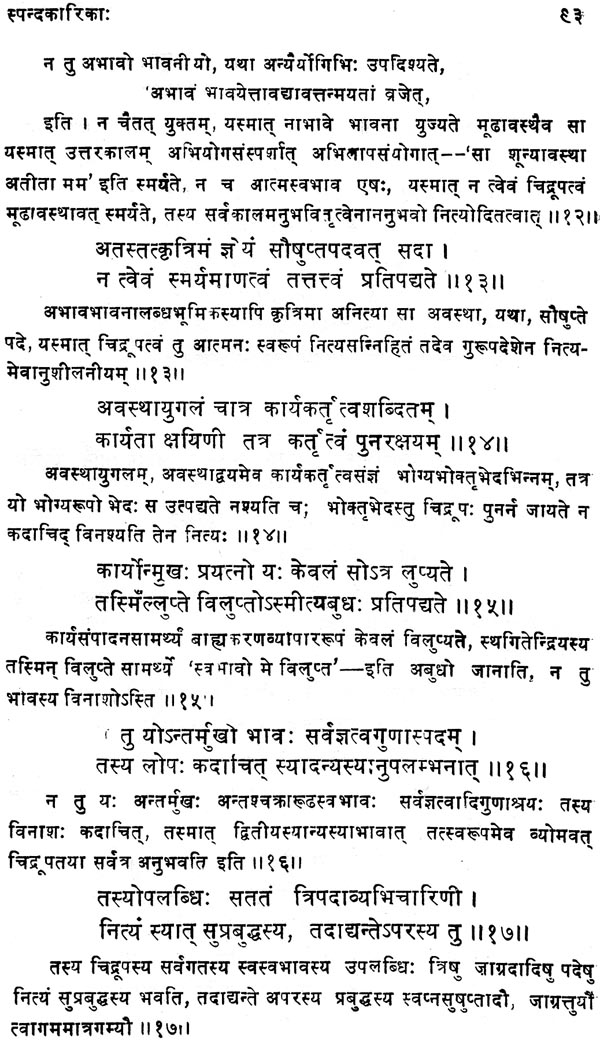
Spanda Karika: A Study - Along With Sanskrit Text & Vrtti of Sri Bhattakallata (An Old and Rare Book)
Book Specification
| Item Code: | NAR553 |
| Author: | Dr. (Km.) Rajendra |
| Publisher: | Parimal Publication Pvt. Ltd. |
| Language: | Sanskrit and English |
| Edition: | 1994 |
| Pages: | 112 |
| Cover: | HARDCOVER |
| Other Details | 8.50 X 5.50 inch |
| Weight | 260 gm |
Book Description
The Literature of the Trika System or Saivism is divided into three branches.
- Spanda
- Agama
- Pratyabhijna
There are eight systems of Salva philosophy, the represent different currents of the philosophic thought such as dualizm, dualism cum monism, monism, qualified monism, idealism and voluntarism etc.. The Seism Philosophy thus seems to be complete in itself and to have had an independent tradition.
Spanda branch elaborates the purely advaitic principles as enunciated in the Siva-Sutra. The main and only the available one text of this branch is Spandakariki and its commentaries of Ksemaraja Bhatta-Kallata and Rama Kantha.
The present study of the Spanda-Karika has been divided into seven chapters.
I take the opportunity to record my intellectual debt to learned editors & scholars when I had to fall back upon my material and inspiration at different stages.
This is my duty to acknowledge my gratefulness to Prof. D.B. Sen Sherpa, under whose guidance. I have the privilege of Studying Saiva & Balm Philosophy. No words, no language is adequate to express my heartiest veneration for Dr. Sipra Banerjee whose learned and invaluable advice always kindled inspiration in the face of difficulties and obstacle encountered in the course of this work. Here, I also cannot fail to record my sincerest feelings for Dr. Smite Banerjee, whose unfailing blessings have guided me to work in the face of several odds and adversities.
In the end I curve the indulgence of readers for mistakes, which might have crept in advertently. I have tried to be faithful to the Sanskrit Texts so far as possible.
**Contents and Sample Pages**













